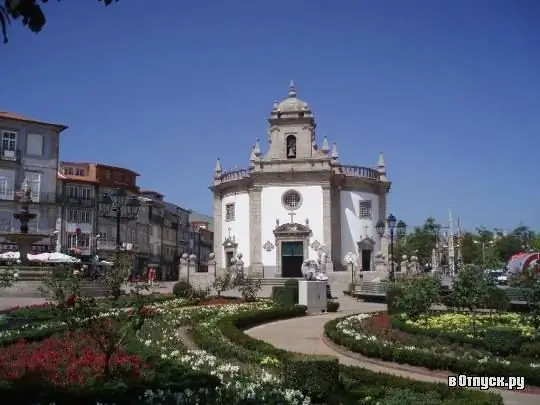
Description of the attraction
The Señor da Cruz Church is located in the southwest corner of Place de la Republique, the central square of Barcelos. The project of the temple was designed and executed by the famous architect in Portugal, João Antunis, around 1705.
The domed church serves as a reminder of an event that took place two centuries earlier. According to legend, in the winter of 1504, a local shoemaker, João Pires, saw a miraculous vision in which a black cross made of clay crashed into the ground. Over time, a small chapel was built there. Later, on the site of the chapel, the Señor da Cruz church was built. Since then, every year in May, the city has hosted the impressive festival of the crosses, Feshta dash Kruzish (Festival of the Crosses). Residents wear national costumes, the city is decorated with flowers, and in the evening the city's sky is illuminated with colorful fireworks. And in the Señor da Cruz church, while the festival lasts, the floor is strewn with flower petals in the form of a cross on the floor.
During the construction of the church, João Antunes used granite combined with lime mortar. This style of building construction was typical of the north of Portugal. The combination of granite with lime mortar emphasized the harmony of the architectural lines of the Baroque style in the building. The church is built in the shape of a Greek cross with rounded corners. The small building of the temple is decorated with pilasters, cornices, a balustrade with obelisks, a skylight and a bell tower.
Inside, the church has an unusual octagonal shape. In the interior, attention is drawn to the gilded carved wooden altars, among them the altar of the 16th century with the image of the Crucifixion of Christ stands out. It is also worth noting that the walls are decorated with 18th century azulejos tiles by the renowned Lisbon tile maker João Neto.






